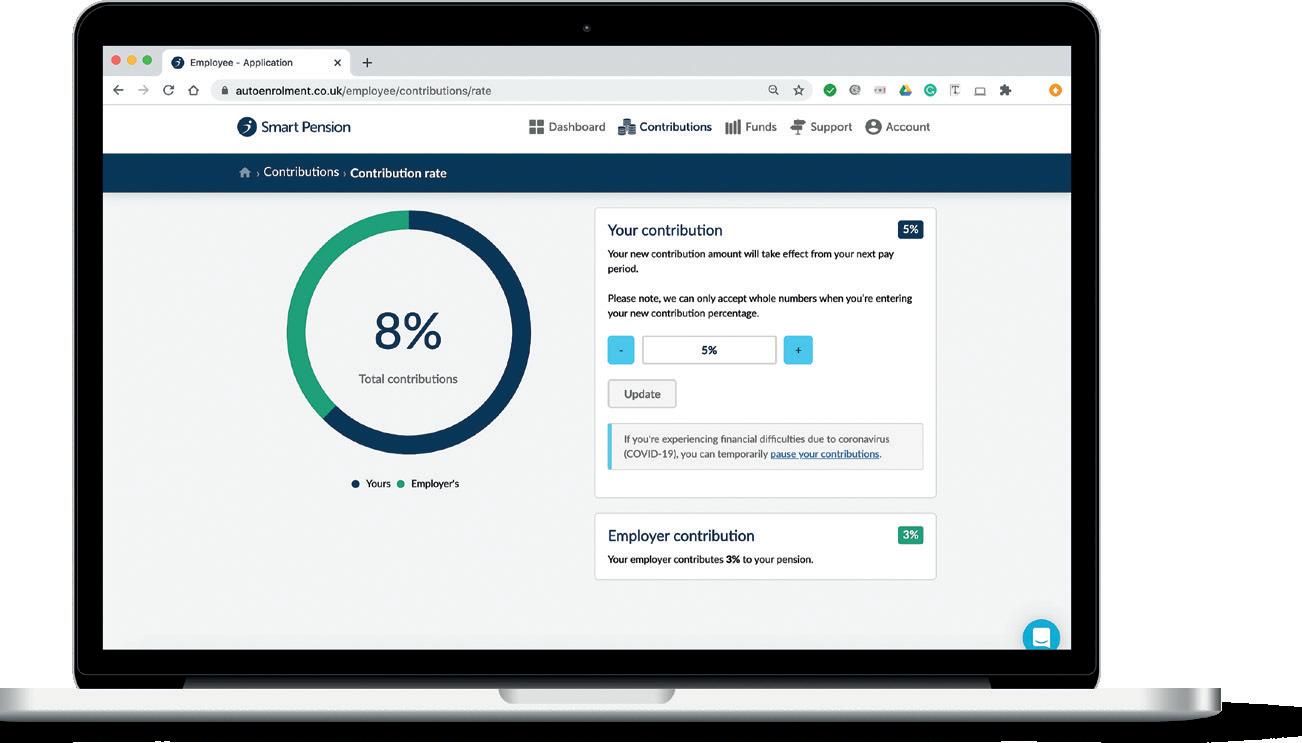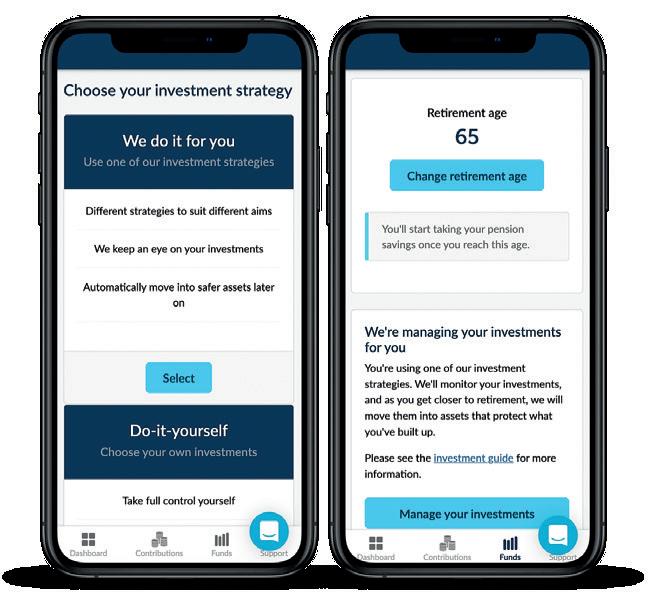
8 minute read
global retirement by Smart
Why regulation is the future of global retirement
The nature of retirement is changing rapidly and the industry needs to get things right and fast, writesDan McLaughlin, Director of International at Smart
Advertisement
First up, before we get into the synergy between regulation and technology, it is important to flag that global retirement is growing and expanding at a relentless pace. The recently published Global Pension Assets Study 2021 by the Thinking Ahead Institute put overall pension assets at more than $50trillion. Pretty huge, but still not enough if you go by the World Economic Forum’s retirement savings gap analysis which suggests that this gap will reach hundreds of trillions of US dollars by 2050.
In closing this gap, it is pretty unrealistic to expect governments, or taxpayers, to foot the bill. Not least as we see the increase in life expectancy across many parts of the world and diminishing public finances pre but certainly post Covid-19. The solution must be regulatory reforms, and ambitious ones at that, to ensure citizens across the world can retire with the dignity they deserve.
There are, arguably, record levels of regulatory change happening across the world with much more in the pipeline. Many governments are wrestling with the need to increase pension coverage, either through the second pillar (workplace) or third pillar (private savings). It seems that trying to amend the first pillar (state pension) can be problematic!
What we are seeing is uniformity in that defined contribution (DC) is now the dominant retirement model. Clearly, there is a huge volume of defined benefit (DB) assets, but DC is very likely to be the weapon of choice as governments introduce reforms. If even more evidence were needed, the Dutch Pensioenakkoord reforms are the case in point and arguably the biggest retirement reform in the world right now. The reform involves transferring Dutch savers and their assets to a new DC system by 2026.
Within this overall DC superstructure, there is a degree of uniformity in the shape and size of the regulatory changes and proposals. Take auto enrolment – while there are slightly different flavours, it is already well established in Australia, the UK, New Zealand, Hong Kong and recently Poland (to name but a few). Other countries are seriously considering or close to implementing auto enrolment, including the US, South Africa, Ukraine and Greece (with the latter possibility tightly woven into the financial stability of the nation’s finances).
At the other end of the spectrum we are seeing a range of softer, voluntary reforms. The Loi PACTE reforms in France have provided overall system improvements to create a DC wrapper which includes a simpler workplace DC pension offering. Elsewhere, we are seeing more pressure for financial institutions to digitise, as in Mexico.
Pooled or collective models are beginning to reach new heights too, whether through a master trust in the UK or UAE, a pooled employer plan in the US or a collective system as in the
Netherlands (and now UK, albeit limited). We’ll have to wait and see to what extent collective DC takes hold in the UK.
Where uniformity starts to fall away is retirement and retirement income. Unless you have a defined benefit pension as the main part of your retirement income, the only uniform feature of retirement is that an individual’s personal circumstances become far more personalised, non-linear and certainly more complicated. It is pretty unreasonable to expect people to become retirement and tax experts just because they’ve retired. In Australia, retirement income is a super hot topic as it is a now well-established position that it is not sustainable to essentially abandon retirees at the point of their retirement. Legislation is likely to require trustees to have a retirement income strategy, similar to the way in that they must have an investment or insurance strategy. We are also seeing some movements in the Netherlands with lump sums, the ability for US employers to more widely offer annuities in 401(k) plans and in the UK investment pathways provides savers who
aren’t receiving advice with better retirement outcomes when going into drawdown.
So, enough of the retirement – what role does technology play in all this? The short answer is lots. DC systems need modern technology to deliver the whole host of outcomes from operational efficiencies to a world class digital customer experience. Think about this – when was the last time you received a bank statement in the post? Or visited a branch to pay a bill? In which year did you most recently queue up at a supermarket checkout with a cheque book and pen in hand? For a generation of people now used to mobile and online banking – and even paying in shops, bars and restaurants using smartphones – methods that were common just a few years ago seem antiquated. This same generation is the first cohort that will save for their retirement predominantly through defined contribution auto
enrolment vehicles. The experiences they have with their banks and other service providers will lead them to expect the same from their pension. They want to access their balance quickly and easily, and the ability to make changes to their investments and contribution rates at the touch of a button or tap of a screen.
And yet, they will find the pensions sector is decades behind most of the financial services industry in terms of technology. That’s because, despite the introduction of robo-advice, artificial intelligence and real-time dashboards, the online experience for pension scheme members varies considerably.
For many providers, communications are still paper-based. Online platforms are slow. Many remain inflexible and lack functionality. Legacy systems like these are a lead weight around the necks of many pension providers, and their lack of flexibility threatens to disengage and disillusion millions of savers for whom understanding their savings will be vital to their longterm financial wellbeing. Through a modern digital experience, technology can deliver greater individual engagement in retirement particularly crucial for DC systems where retirement is essentially delegated to the citizen. From a financial institution’s perspective involved in the delivery of pensions, regulatory change is often the trigger for digital transformation and adopting a technology first retirement offering to the market. Pensions, across the world, are littered with legacy systems that add cost to delivery and drain assets from accounts. It doesn’t have to be this way.
This is not an easy task but that doesn’t mean you shouldn’t keep trying. Many technology systems – whether at insurance companies or pension providers, or in-house at large pension schemes – were built at a time when large operational teams were expected to use and complement them. As a result, there was no need for the software to be enhanced to replace or to improve upon some of those processes.
However, as soon as you start onboarding people onto that software, and as soon as you begin to store members’ assets and data on there, it becomes very difficult to do two things. First is to move or improve the data. The other is to alter the operational processes around the data and the day-to-day business processes. This is not just a problem when moving people between providers, but also often an issue within the same one. Products launched in the 1980s, for example, will still be reliant on paper-based systems and old mainframe computers often located on-site today. The challenge of such a system is significant at the best of times but has been thrown into sharp relief during the Covid-19 pandemic and the nationwide lockdown.
Using a combination of cutting edge UX and behavioural techniques it is possible to engage people at key moments with the right information. Technology also provides more hands-on control and ownership including the ability for individuals to have more say or at least understanding of what impact their investments are having on the environment or society.
Ownership and control through technology also extends to the experience and the ability to make better decisions. Take the retirement phase, as mentioned earlier, you have to become a retirement ace just because you have finished working. Technology, like our own Smart Retire, removes all the complexity and arduous processes that often stand in the way of very simple decisions and outcomes. Smart Retire is able to operate in multiple jurisdictions.
At Smart, we understood, very early in our journey, the global retirement opportunity. That is why we have built and continue to develop our world class global DC retirement platform. Already operating in Europe and the Middle East, and with further rollouts planned, we are able to transform retirement propositions across the world so our partners can take full advantage of the opportunities brought by regulatory changes. Overall, we can be sure of a few constants in the world of retirement:
1. People will age 2. Government finances will rarely improve 3. DC reforms will continue at pace 4. Regulation is the future of retirement

About Dan McLaughlin
Dan is director of international at Smart and is responsible for leading its global savings and technology platform. Dan holds an MBA and, before joining Smart, he was a policy adviser at the UK’s Department for Business Innovation and Skills where he advised ministers on business strategy and innovation. During Dan’s time at Smart, the operation has grown from a single office in London, to a presence on four continents. About Smart
Smart is a global technology business that focuses on modernising and innovating in the pensions and retirement savings industry – a sector now worth nearly $50trillion globally and growing at eight per cent a year. Our Smart Platform is revolutionising saving for and spending in retirement, supporting both businesses and members towards better outcomes and financial wellbeing. As well as our platform, our technology powers our UK-based master trust scheme, helping hundreds of thousands of members save for retirement. We have a clean sheet of paper, always looking at things with a fresh perspective, and not just doing things a certain way because that’s the way it’s always been done. Website: www.smart.co Linkedin: linkedin.com/company/ smart-pension Twitter: @smartpensionuk







